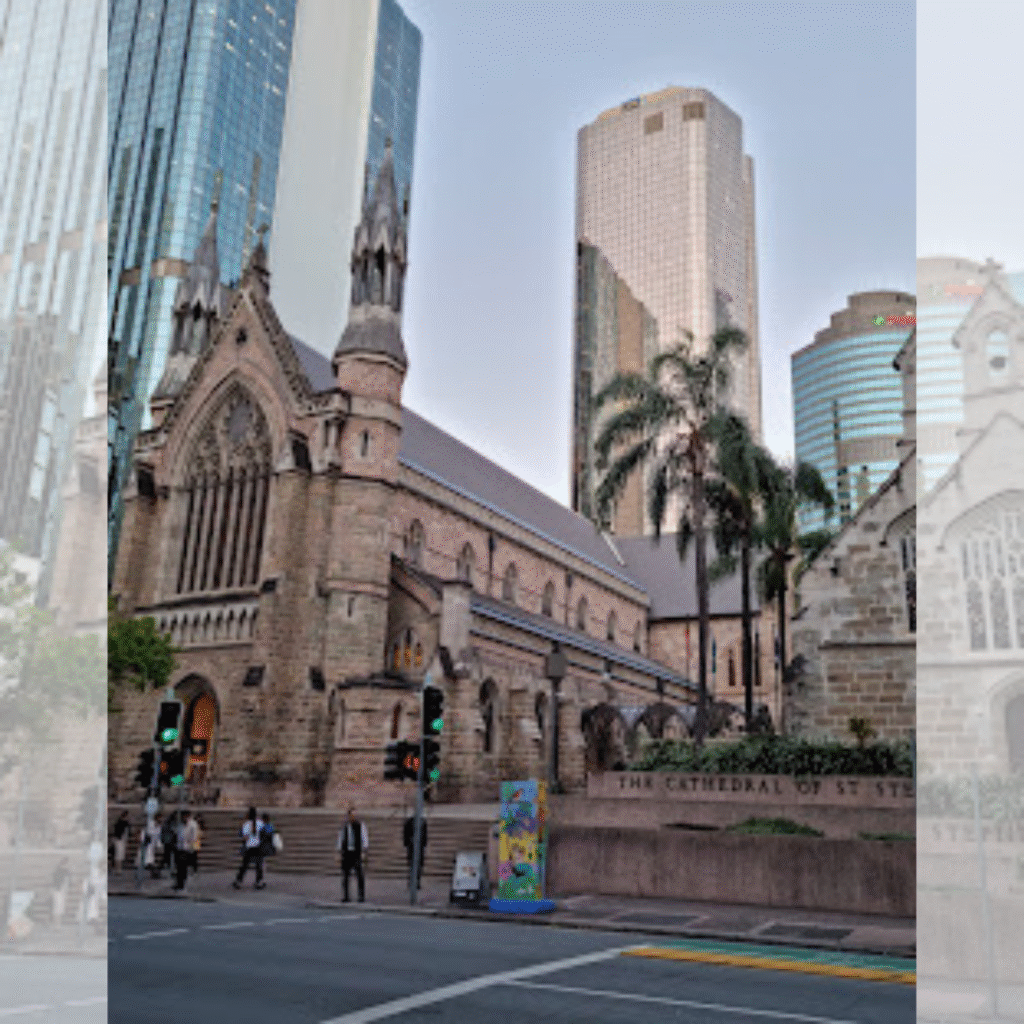
St. Stephen’s Cathedral, Brisbane, is not only a spiritual centre but also an artistic and architectural landmark. One of its most breathtaking features is its collection of stained glass windows. These stained glass bring vibrant light, storytelling, and deep symbolism into the sacred space. These windows are a rich tapestry of colour and faith, reflecting centuries of ecclesiastical tradition while also embracing modern interpretations.
Historical and Artistic Context
The stained glass windows of St. Stephen’s Cathedral span different eras, showcasing both traditional and contemporary glasswork. The original windows date back to the late 19th and early 20th centuries. These were created in the style of English Gothic Revival art. The early panels were imported from England and Germany. Each painting were crafted by master glassmakers using techniques that had been passed down for generations. Their focus was on biblical narratives and saints, rendered in richly coloured glass. Hence, these were detailed painting and leadwork that tell the story of Christian salvation and sacrifice.
In later decades, particularly from the mid-20th century onward, the cathedral commissioned Australian artists to design new windows. This blend of old and new offers visitors a unique visual dialogue between historic European styles and modern Australian interpretations of sacred themes.
Themes and Iconography
The windows in St. Stephen’s Cathedral primarily depict scenes from the life of Christ, the Virgin Mary, and various saints. Key biblical moments—such as the Annunciation, the Nativity, the Crucifixion, and the Resurrection—are vividly portrayed in glowing panels that surround the nave and transept. Each image is designed to draw the eye upwards and inspire contemplation and reverence.
Some windows pay homage to local heritage. For instance, there are representations of St. Mary MacKillop, Australia’s first canonised saint, and other figures significant to the Australian Catholic community. The use of native flora and fauna subtly woven into the designs also reflects the integration of sacred storytelling with the local environment.
Craftsmanship and Materials
Traditional stained glass techniques are on full display in the older windows. These hand-painted details, fired glass enamels, and precisely cut panes joined by slender lead cames. The craftsmanship is evident in the fine facial expressions, detailed garments, and architectural elements. Arches and columns that frame each scene were carefully handmade.
Modern additions, while respecting these traditions, experiment with bolder colour blocks, abstract motifs, and fused glass techniques. This contrast doesn’t feel jarring. Instead, it adds dynamism to the cathedral interior, echoing the evolving nature of faith and art.
Spiritual and Visual Experience
As sunlight streams through the windows throughout the day, the St. Stephen’s Cathedral, Brisbane interior transforms into a shifting dance of colour and light. Morning light enlivens the eastern windows, while the setting sun casts a golden hue through western panels. This interplay not only enhances the space visually but also deepens the spiritual atmosphere of worship and reflection.
Whether you are admiring the delicate artistry of a 19th-century depiction of Christ or the modern abstraction of hope and redemption, the stained glass windows of St. Stephen’s Cathedral remain a profound expression of beauty, belief, and the divine light that permeates both art and architecture.
